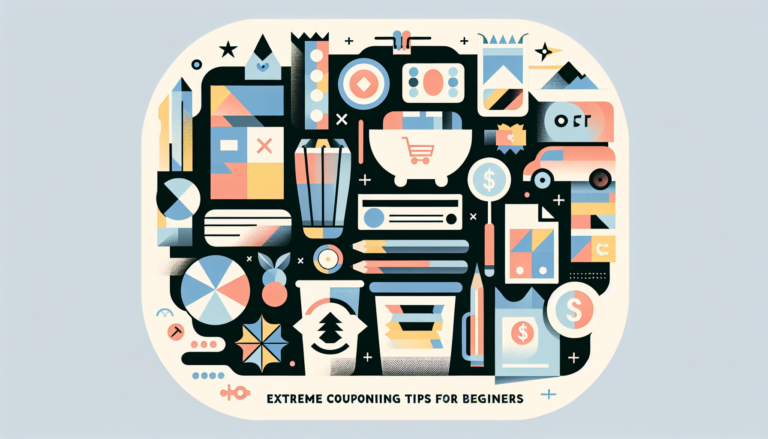Achieve Financial Balance: Implementing the 50/30/20 Rule with Ease
Introduction to Budget Management
Ever felt like your money’s playing a ninja, disappearing just as fast as it arrives? Handling your dough thoughtfully is the key to unlocking financial peace and meeting those big dreams. Budgeting’s your trusty sidekick, giving you the lowdown on where your cash flows and helping you keep a lid on those dollars.
Basics of Financial Planning
Financial planning’s about setting the stage for success: think goals, future cash flow predictions, and a plan of attack to get there. Enter the personal finance 50/30/20 rule, your no-nonsense strategy that slices your after-tax moolah into clear chunks: needs, wants, and savings. This rule nudges you to direct 50% to life’s essentials, 30% to your sneaky splurges, and that crucial 20% to savings for a rainy day or when you’re in the swinging chair pondering retirement N26.
This method’s a gem, helping you keep your spending in check while saving like a pro. The 50/30/20 rule’s your flexible friend, swaying with life’s ups and downs. Curious about getting started with it? Peep our page on the 50/30/20 budgeting system.
Budget Breakdown
Let’s slice up the 50/30/20 pie:
| Cost Type | Cut | What It’s For |
|---|---|---|
| Needs | 50% | Must-haves like rent, chow, and utilities |
| Wants | 30% | Fun stuff, from movie nights to fancy dinners |
| Savings | 20% | Stashing for goals like emergency funds, retirement, or a sweet new crib |
Tackling your bills this way not only boosts your bank account but also turns you into a wise spender. Knowing where your cash’s headed means you’re taking savvy steps toward your dreams. For more on carving up your budget, hit our piece on 50/30/20 budget allocation.
Nailing a financial strategy wrapped in the 50/30/20 rule can be your ticket to sleeping easy and feeling good about your financial scene.
Understanding the 50/30/20 Rule
Ever feel like your money’s got a mind of its own, especially just after payday? Enter the 50/30/20 rule—a no-nonsense guide to budgeting that promises to keep your bank account happy and you stress-free. It’s about slicing up your after-tax dollars into three neat sections: needs, wants, and good ol’ savings.
Breaking Down the 50/30/20 Rule
Here’s the game plan:
-
50% for Needs: This chunk is for stuff you can’t live without—think rent, car fuel, insurance, electric bill, and let’s not forget your weekly grocery haul. According to the folks over at UNFCU, sticking to this part of the budget is like having a financial seatbelt—keeps you safe and steady.
-
30% for Wants: Here’s where the fun lives. These are the extras that make life sweet but won’t toss you into survival mode if skipped—a Netflix binge now and again, grabbing dinner with pals, or snagging the latest tech toy. Get the lowdown on what qualifies as “wants” over at Citizens Bank.
-
20% for Savings: This bit is all about future you. Maybe it’s padding out that emergency fund, squirrelling away for a beachfront retirement, or saving up for the dream house. This is your ticket to long-term peace of mind, as UNFCU assures us.
Here’s a quick table to see it all in one glance:
| Category | Percentage | Examples |
|---|---|---|
| Needs | 50% | Rent, utilities, groceries, insurance, transportation, minimum debt payments |
| Wants | 30% | Dining out, entertainment, hobbies, clothing, gadgets |
| Savings | 20% | Emergency fund, retirement savings, home down payment |
For tips and tricks on how to make this strategy work like a charm, check out our pages on 50/30/20 budget rule and 50/30/20 budgeting system. And if you’re all about the details, dive into 50/30/20 budget breakdown and 50/30/20 budget allocation.
Implementing the 50/30/20 Rule
If you’ve decided to jump on the 50/30/20 rule bandwagon, buckle up for a budgeting ride that promises more control over your finances. This straightforward method steers you through the maze of calculating after-tax income, categorizing expenses, and tweaking your habits until they fit like your favorite pair of jeans.
Calculating After-Tax Income
First things first – know what you’re really taking home. After-tax income is what’s left after Uncle Sam gets his share. It’s the golden figure that guides how you’ll divvy up your cash.
Crunch the numbers like this:
After-Tax Income = Gross Income – Taxes Paid
So, let’s say you’re sitting pretty with a $60,000 salary but the taxman takes $15,000 of it. You’re left with:
$60,000 – $15,000 = $45,000
And there you have it, your magic number to start bossing around with the 50/30/20 budgeting rule.
Categorizing Expenses
With your after-tax income number in hand, it’s time to split your spending into three piles: needs, wants, and savings.
-
Needs (50%): These are the “can’t-live-without” costs – think rent, groceries, insurance, and other essentials that keep your life afloat. Stick to the rule and make sure these essentials don’t gobble up more than half of what you bring home.
-
Wants (30%): Now we’re talking about the fun stuff – dining out, catching the latest flick, maybe that gym membership you use sparingly. Splurge a bit here, but keep it in check at roughly 30% of your income, so you’re enjoying life without emptying the wallet.
-
Savings (20%): This is your future safety net, where you’re socking away bucks for things like retirement or a rainy day. That 20% stash provides peace of mind that you’re set for whatever curveballs life throws your way.
To put this into perspective, if you’re working with $45,000 after taxes, your breakdown looks like:
| Category | Percentage | Amount |
|---|---|---|
| Needs | 50% | $22,500 |
| Wants | 30% | $13,500 |
| Savings | 20% | $9,000 |
Adjusting to Meet the Rule
Now, sticking to 50/30/20 might mean playing financial Tetris with your expenses. Maybe those “needs” are hogging more than their fair share at 60%. Time to tighten the belt – look into cheaper digs, cut back on electricity, maybe start clipping coupons.
For instance, if you’re overspending on fun stuff at 40%, you might want to rethink that weekly movie outing or dial back the gourmet coffee runs.
Little tweaks and conscious choices make a massive difference. By getting cozy with your budget, you can follow the 50/30/20 rule and keep your financial ship from sinking.
Examples of Needs, Wants, and Savings
The 50/30/20 rule is a handy way to get a grip on your finances. It breaks down your after-tax cash into three nifty parts: needs, wants, and savings. Below’s a quick guide on how to spread out your dough into each pot.
Allocating 50% to Needs
Needs are those pesky expenses that keep your world turning. Basic stuff, ya know. They shouldn’t suck up more than half of your take-home pay. Your day-to-day essentials cover:
- Rent or mortgage
- Keeping the lights on and water running
- How you get from A to B (car, bus, bike—your pick)
- Feeding yourself (grocery runs)
- Any insurance (health, car, home—whatevs)
- That pesky debt you promised to repay
So, if you’re bringing home $4,000 every month, these might be your need-to-haves:
| Needs Expense | Amount ($) |
|---|---|
| Rent/Mortgage | 1,200 |
| Utilities | 300 |
| Groceries | 400 |
| Transportation | 600 |
| Insurance | 250 |
| Minimum Debt Payments | 250 |
| Total Needs | 3,000 |
Here’s the kicker: this total hits $3,000, taking up 75%, a bit higher than planned. Time to trim it down to match that 50% sweet spot.
Allotting 30% to Wants
Wants make life a bit sweeter but aren’t life or death. They jazz up your routine. Pick what tickles your fancy:
- Savoring a night out (yum)
- A getaway (who doesn’t love a vacay?)
- Chilling hobbies
- Subscriptions (because binge-watching is life)
- Fashion fixes (beyond the basics)
With that same $4,000 paycheck, let’s play with the fun money:
| Wants Expense | Amount ($) |
|---|---|
| Dining Out | 200 |
| Vacations | 400 |
| Entertainment | 150 |
| Hobbies | 100 |
| Subscriptions | 150 |
| Clothes | 150 |
| Total Wants | 1,250 |
All that fun runs you $1,250, sneaking to 31%. A little tweak brings it to the perfect 30%.
Setting Aside 20% for Savings
Savings are the trusty sidekick in your money journey—secure your future self a nice nest egg. Whether for emergencies or retirement dreams, these take at least 20% of your take-home cash. Here’s where your savings go:
- Oh no, emergency stashes
- Stacking up for retirement bliss (hello, 401k and IRAs)
- Other nest-eggs (investments for future fun)
For the trusty $4,000 take-home, it’s time to watch the savings grow:
| Savings Account | Amount ($) |
|---|---|
| Emergency Fund | 400 |
| Retirement Account | 400 |
| Investments | 400 |
| Total Savings | 1,200 |
The saved bucks total $1,200, matching up with 30% of the pie. Regularly squirreling away cash ensures financial stability and a worry-free future.
Shake up these categories to match your situation or mood. For more on the power of the 50/30/20 breakdown, check out our other resources on the 50/30/20 budget rule and 50/30/20 budgeting system.
Flexibility and Adaptation
Look, the 50/30/20 rule isn’t set in stone; it’s more of a go-with-the-flow strategy for handling your cash, whether you’re living large or just getting by. It’s your finance buddy that’s there when you’ve got a curveball thrown at you, be it a funky paycheck, an unexpected bill, or something personal that’s messing with your wallet.
Adapting the Rule to Different Circumstances
Tweaking the 50/30/20 rule is like adjusting recipe ingredients to taste—they depend on the person doing the cooking. Living in a pricey spot? You might find you’re dishing out more on needs; yeah, the rent is sky-high, and groceries don’t exactly grow on trees. This means you’ll shuffle things around, maybe putting a little less cream in the savings coffee and trimming down those “just-because” spendings:
| Category | Recommended Allocation | Adjusted Allocation |
|---|---|---|
| Needs | 50% | 60% |
| Wants | 30% | 20% |
| Savings | 20% | 20% |
This flexibility is like putting a personal stamp on your budget, so the 50/30/20 budget rule can be your go-to, no matter what’s coming in.
Adjusting for Unique Financial Situations
Okay, life can throw some nasty curveballs—like losing your job, or a mountain of medical bills suddenly appearing. When these happen, it might be time to switch up how you’re slicing that budget pie. Maybe you’ll need to slice off some pieces meant for savings or fun spending to cover those must-deal-with-now expenses.
Making it easy? Let tech do the heavy lifting. Set up a system that moves cash straight from your checking account to your savings or investment accounts regularly, without you having to lift a finger. This way, you stick to that 50/30/20 budgeting system plan without your hand accidentally dipping into those long-term savings.
In the whirlwind of money management, staying flexible helps keep your financial boat steady. Stick with the basics of the 50/30/20 budget breakdown, but don’t be afraid to bend those rules to fit your life’s rhythm. It’s about finding your groove in saving, even when life’s tossing surprises your way.







